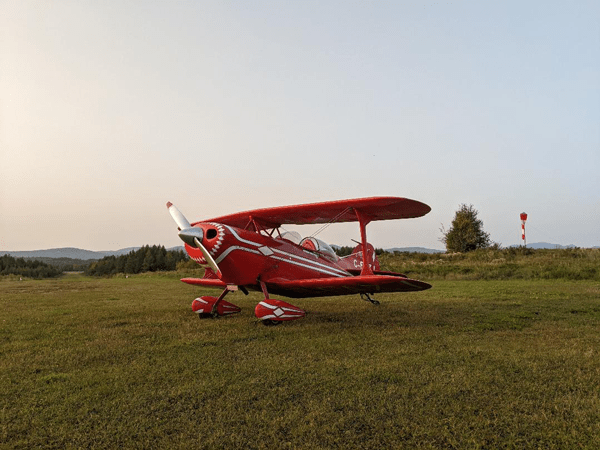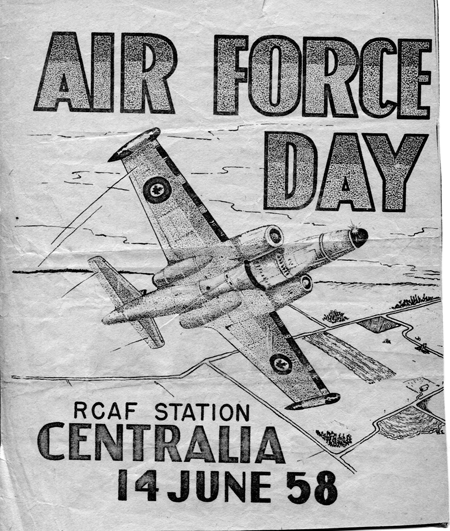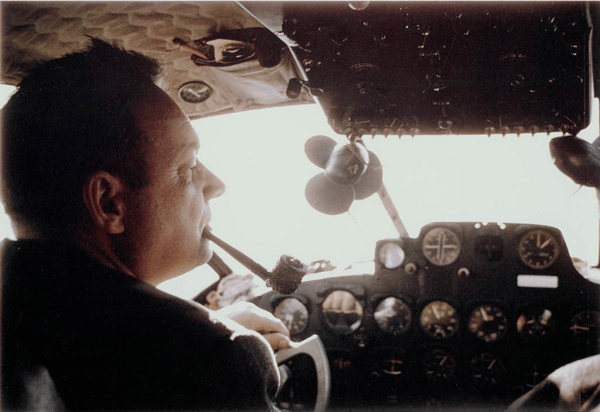
By John Wyman, EAA 462533, Chapter 266 Montreal
I was recently asked by a local flying club president to give a presentation on any close calls I have had in my career, so far. Initially, I thought that this was a pretty tall order. I still think it is. Think about it. You’re asked to put all your cards on the table, occasionally using an alias about the next story you mention, “I knew a guy once who… (insert bad story here),” to draw attention to the story without implicating your name and reputation, all in the effort to pass some wisdom along. Nice in principle, but much harder to do unless you see that your words can make a difference and that the lesson you learned could potentially save someone else in the same awkward circumstance(s), someday. I think you have to know where things started to go wrong before you’re in a position to advise others. A bit of humility helps. His question got me thinking. How many pilots, in general, come forward with a story about their close calls and how many of those make it to print? Probably not so many compared to the accident reports that blame an accident on the pilot(s), but that do not go far enough into their planning and mindset at the time to determine where they were psychologically at the time of their misfortune. So, I figure that this article may be the key for me to actually start that conversation and talk about a few close calls I’ve had and perhaps pass along some thoughts of how to avoid them.
Let’s go out on a limb (for argument’s sake) and declare that situational awareness is at the core of a lot of close calls, yet it is seldom ever mentioned in the accident report. It’s a hard thing to quantify. From my experience, aerobatic and glider pilots generally make a conscious effort to ask themselves if they are physically and mentally ready to fly. They have seen, from previous accidents to their contemporaries, that mistakes can happen if you haven’t looked outside at not only your airplane and environment but also at your person — am I ready to fly and have I looked at all the “parameters” to my day’s flying? Some of them even use acronyms like am I S-A-F-E (Slept, Ate, Fluids, Etc.) My problem is that it challenges my memory, and although I should remember what it is, I already have too many force-fed to me from Boeing and Airbus. For a long time, I didn’t put enough emphasis on this (I should clear up some memory), but a recent incident has me thinking it’s a good idea. I will get to that. However, the lesson is easily lost when you’re preoccupied with other objectives, or you just have too much on your mind. Flying is liberating in that sense, except if your plate is already full, you may not have enough room left on your hard drive to handle a surprise. Although we all try to think about the “what ifs,” just how are we supposed to know what they ALL are if there are still hard lessons that you haven’t yet learned? FLYING magazine ran a column called “I Learned About Flying From That…” for years. Gordon Baxter (aka Bax Seat) penned them for a long time. I read many of his. They were excellent. You learn a ton reading about other people’s mistakes.
I made one recently when I ferried my Pitts Special on November 23 in less-than-ideal conditions. Weather-wise, ceiling and visibilities were okay, but the outside temperature was cold. Zero to -2 degrees Celsius. At altitude it would be colder. I knew I had to dress for the occasion as there is no heat in my airplane. I doubt that few if any Pitts Specials have heat — although, recently, I have heard of one that was put on skis! That’s certainly food for thought… Nonetheless, I did take the precaution of wearing three layers of clothing, wool socks, a scarf, and gloves, but I didn’t wear a tuque (hard to do over a headset anyway — yet it’s critical to this story) and I was rushing to get home as the sun took a rather short arc through the sky at this time of year. I could have donned a winter coat and forgone the parachute. That would have been wise. Simply put, I wasn’t thinking of all the variables. I thought that I had them all covered. The exception was the long-term effects of cold. It really isn’t that long.

An hour is a long time to be in a Pitts, regardless of the outside temperature. It is a confined cockpit. Even if you want to move your legs around, you can’t. There isn’t any wiggle room. The flight went well for the first 45 minutes. I had planned a fuel stop after an hour, thinking that this would be the perfect time to get warm, refuel, and have a cup of coffee. Little did I realize though that my “scare” and troubles would only begin at the 45-minute mark. Due to the soaking cold, I started to feel light-headed and figured that it would only be a few minutes at most before I passed out. I could feel it coming on. It felt like my head was going to tilt over to one side. It was a challenge to keep it upright. I had never felt this way before and could only sum it up to hypothermia settling in, something I hadn’t overly thought about in my preparations for the flight, and it certainly wouldn’t have been decipherable at the scene of the post-crash investigation. Who could have surmised that the pilot still succumbed to hypothermia even though he was well dressed for it?
How did I get out of it? I started breathing quickly and yelling like I would have if I was pulling gs to withstand blood flow loss (graying out) during an aerobatic maneuver. Yes, there were just a few expletives that left my mouth! I also tried to move as much as I could within the cockpit; the airplane doing a dance about the sky while undertaking the contortionist positions. It was like I was map reading — you can barely keep it level for a few seconds before you have to readjust the stick between your knees. I even thought of landing the airplane on a snow-covered grass runway (I could have used those skis!) that was off to my left, but figured it was safer instead to stay where I was and have some height. The snow seemed too daunting at the time as I didn’t know its depth and couldn’t really see if there were visible side markers — essential to landing any Pitts. Eventually, after a minute or so passed, I regained my balance and carried on for the next 15 minutes to a long, paved runway where I warmed up, got fuel, and contemplated the next leg of the ferry — have that tuque on and the radio off (headset removed) because I couldn’t hear a damn thing anyway!
All this to say, that prior to the flight, I never once thought that getting cold so quickly could have led to losing consciousness. I am joking here, but how often have we heard of someone freezing to death and then go on to describe what the experience was like? It just wasn’t on my radar scope as I had never read of someone in a similar bad position, even though I’ve read many stories about flying in the north.
If cold is an enemy (in the air or on the ground) — heat can be just as bad. Years ago, on a survey contract in Oman, the heat in the Piper Cheyenne I was flying had the adverse effect of clouding our (we were two in the cockpit) judgment on the survey block. We were flying with a spectrometer at low altitude on tightly spaced lines at 230 feet AGL using a radar altimeter. Survey is a challenging job. Your eyes must be inside and out at all times. Your cockpit scan is done quickly. Your eyes flitter about. Your head barely moves. Your scan narrows down, flying a perfect straight line (on a GPS-fed ILS indicator) to within barely a meter either side of center. It’s very accurate. I can’t remember who was flying at the time, but my partner was the captain and I was in the right seat. We’d alternate legs and switch up the flying after two full lines with turns at each end. For this particular job, it was a requirement to have two pilots onboard, and you’ll see why that was a good thing. It was an unbearably hot day. In retrospect we should have stayed on the ground — but as with anything, the pressure of getting it done led to us going up anyway, in the scorching temperatures. The previous day went okay, so why wouldn’t today? It started out well enough, but at some point our air conditioning compressor belts gave out and the temperature started to skyrocket. We stripped to our underwear in an effort to stay cool. It was no good. At the time, we had no way of knowing the belts had broken… only that the A/C was selected to max cool but that it wasn’t working. This is where we buckled under the heat but continued just the same. Our brains were fried. A few lines later we opted to save some time climbing to altitude before starting our turn by staying at our surveying altitude. It worked the first couple of times. It reinforced that it was a good idea — except, that over the next couple of lines, we didn’t notice that the block’s desert terrain was slowly transitioning into a pure white salt bed. Unknowingly, we were potentially headed toward a disaster because at the end of the next line we fell into a double “whiteout” in the turn! I think now that it was the captain’s leg (flying) and I caught a glimpse of the radar altimeter showing 75 feet in a 45-degree bank! I swore and he pulled up immediately. Given our wingspan was approximately 40 feet, it put us very close to digging a wing tip at 185 knots. I’ll leave it to the mathematicians out there to figure out the actual height AGL, but because our rational thinking was compromised by the heat, we were both oblivious to the threat of whiteout. Fortunately, we avoided digging our own hole.

I hope that these stories highlight how easy it is to overlook what others might see as obvious. We all try our best but sometimes Murphy’s Law wins. It isn’t correct of some authors (post-accident, no names here) to emphasize such and such a pilot had an exemplary record and that his background of thousands and thousands of hours should put into question why he had a crash in a single-engine Cessna. Those same authors should not state that flying is a dangerous profession and that we should take heed of it and sit on the couch. I read one such article recently and thought that the author could have instead focused more on the positive aspects of flight over any perceived dangers. A more constructive assessment of what we do when we go flying is to say that there are many variables to be aware of and that the only way we can have all the bases covered is to learn from other people’s mistakes, and to also fly enough and improve our overall skills. If we are dissuaded from even starting the engine and heading out, we aren’t helping the community.
Note: I’ll give that presentation on close calls this year if I can come up with enough real-sounding names to dissuade the audience from asking where they came from. If I am lucky, that may just keep them second guessing.
John Wyman, EAA 462533, Chapter 266 Montreal, is a passionate aviator. When he isn’t in the saddle at the airline, he can be found out at the airfield doing any number of things. He likes to fly gliders, practice aerobatics, work on airplanes, and fix stuff.
Post Comments




